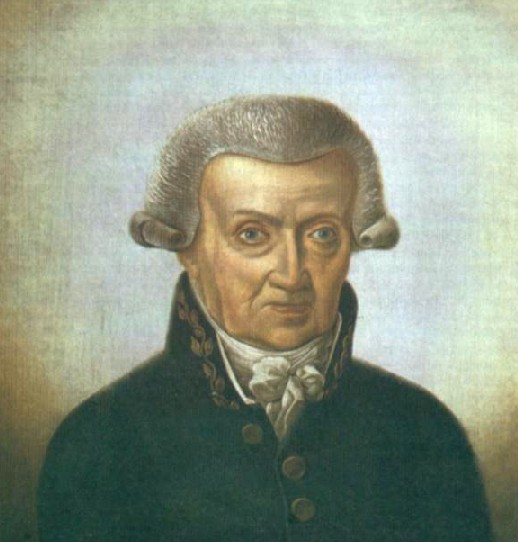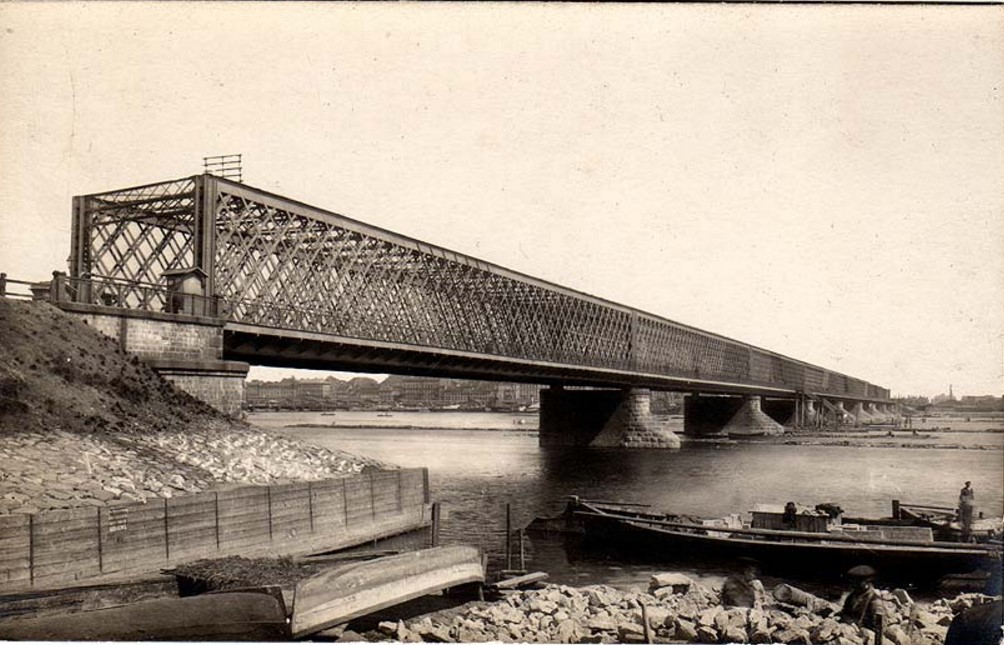|
Zaķusala
Zaķusala ( en, 'Hare Island') is one of several islands in the Daugava river in the central part of Riga, the capital of Latvia. A part of the city's Salas neighbourhood, Zaķusala is home to the Riga Radio and TV Tower, which was completed in 1986 and the Latvian Television building, also completed the same year. The tower is the tallest structure in the Baltic states. On the northern tip of the island, alongside the railway trestles are remnants of the Iron Bridge that was blown up during the Second World War. In maps of the city of Riga in the start of the 20th century, the island is usually referred by the name "Hasenholm". This name is also used in the story of Amfian Gerasimov, a righteous among the nations that saved a Jewish family that live on this island Gallery File:Zaķusala fom Riga tower.jpg, View of the island from the TV Tower File:RigaZakusalasKrastmala(2).jpg, Along Zaķusalas krastmala (Zaķusala Embankment) File:Zakjusalas ziemelju gals.jpg, Northern tip of ... [...More Info...] [...Related Items...] OR: [Wikipedia] [Google] [Baidu] |
Salas, Riga
Salas ('Islands' in Latvian) is a neighbourhood of Riga, the capital of Latvia. Its landmass consists entirely of the islands Zaķusala, Lucavsala, and Kazas sēklis ('Goat Sandbank'). It is the least populated neighbourhood of Riga with a population of just around 70-80 people. Gallery File:Zakjusalas ziemelju gals.jpg, Zaķusala, viewed from the northern end File:Zaķusala island, Riga - panoramio - alinco fan (2).jpg, Zaķusala, viewed from the Riga Radio and TV Tower File:Lucavsala (2).jpg, Lucavsala Recreation Park File:Lucavsalas piemineklis (4).jpg, Monument to Russian soldiers from the Great Northern War The Great Northern War (1700–1721) was a conflict in which a coalition led by the Tsardom of Russia successfully contested the supremacy of the Swedish Empire in Northern, Central and Eastern Europe. The initial leaders of the anti-Swed ... in Lucavsala File:Kazas seeklis.jpg, View of Kazas sēklis Neighbourhoods in Riga {{Riga-stub ... [...More Info...] [...Related Items...] OR: [Wikipedia] [Google] [Baidu] |
Riga Radio And TV Tower
The Riga Radio and TV Tower ( lv, Rīgas radio un televīzijas tornis) in Riga, Latvia is the tallest tower in the European Union. It was built between 1979 and 1989 with funding from the central government of the Soviet Union. Its highest point reaches , which makes it the third tallest tower in Europe (after the Ostankino Tower at and the Kyiv TV Tower at ) and the 15th tallest self-supporting tower in the world. Features There was a restaurant, "Vēja roze" ("Wind Rose"), at the level, which was open since the completion of the tower until 2006. There is a public observation platform just above it at , from which most of the city and surroundings and the Gulf of Riga can be seen. Reconstruction Since May 2019, the tower has closed to visitors for about five years for the renovation and expansion of the visitors' area and the adjacent territory under the TV Tower 2.0 project. It is planned to re-open in 2023 when there will again be a restaurant and the tower's bomb shelter ... [...More Info...] [...Related Items...] OR: [Wikipedia] [Google] [Baidu] |
Latvijas Televīzija
Latvijas Televīzija (''Latvian Television'', LTV) is the state-owned public service television broadcaster in Latvia. LTV operates two channels, LTV1 in Latvian and LTV7 (previously called LTV2) in Latvian with selected programming in Russian. The broadcaster has been fully funded by the state budget since 1 January 2021, when, after years of debate, it and radio broadcaster Latvijas Radio exited the advertising market. It is currently led by Ivars Priede, the sole Board Member (previously - by the Chairman of the Board). LTV is a member of the European Broadcasting Union, having joined on 1 January 1993. From the restoration of independence in 1991 to 31 December 1992, it was a member of the International Radio and Television Organisation (OIRT). LTV hosted the annual Eurovision Song Contest in 2003, as well as the IIHF Men's Ice Hockey Championships in 2006 and 2021, and the inaugural Eurovision Choir of the Year competition in 2017. LTV1 broadcasts the Eurovision Song Co ... [...More Info...] [...Related Items...] OR: [Wikipedia] [Google] [Baidu] |
Riga
Riga (; lv, Rīga , liv, Rīgõ) is the capital and largest city of Latvia and is home to 605,802 inhabitants which is a third of Latvia's population. The city lies on the Gulf of Riga at the mouth of the Daugava river where it meets the Baltic Sea. Riga's territory covers and lies above sea level, on a flat and sandy plain. Riga was founded in 1201 and is a former Hanseatic League member. Riga's historical centre is a UNESCO World Heritage Site, noted for its Art Nouveau/Jugendstil architecture and 19th century wooden architecture. Riga was the European Capital of Culture in 2014, along with Umeå in Sweden. Riga hosted the 2006 NATO Summit, the Eurovision Song Contest 2003, the 2006 IIHF Men's World Ice Hockey Championships, 2013 World Women's Curling Championship and the 2021 IIHF World Championship. It is home to the European Union's office of European Regulators for Electronic Communications (BEREC). In 2017, it was named the European Region of Gastronomy. I ... [...More Info...] [...Related Items...] OR: [Wikipedia] [Google] [Baidu] |
Second World War
World War II or the Second World War, often abbreviated as WWII or WW2, was a world war that lasted from 1939 to 1945. It involved the vast majority of the world's countries—including all of the great powers—forming two opposing military alliances: the Allies and the Axis powers. World War II was a total war that directly involved more than 100 million personnel from more than 30 countries. The major participants in the war threw their entire economic, industrial, and scientific capabilities behind the war effort, blurring the distinction between civilian and military resources. Aircraft played a major role in the conflict, enabling the strategic bombing of population centres and deploying the only two nuclear weapons ever used in war. World War II was by far the deadliest conflict in human history; it resulted in 70 to 85 million fatalities, mostly among civilians. Tens of millions died due to genocides (including the Holocaust), starvation, ma ... [...More Info...] [...Related Items...] OR: [Wikipedia] [Google] [Baidu] |
Great Northern War
The Great Northern War (1700–1721) was a conflict in which a coalition led by the Tsardom of Russia successfully contested the supremacy of the Swedish Empire in Northern, Central and Eastern Europe. The initial leaders of the anti-Swedish alliance were Peter I of Russia, Frederick IV of Denmark–Norway and Augustus II the Strong of Saxony– Poland–Lithuania. Frederick IV and Augustus II were defeated by Sweden, under Charles XII, and forced out of the alliance in 1700 and 1706 respectively, but rejoined it in 1709 after the defeat of Charles XII at the Battle of Poltava. George I of Great Britain and the Electorate of Hanover joined the coalition in 1714 for Hanover and in 1717 for Britain, and Frederick William I of Brandenburg-Prussia joined it in 1715. Charles XII led the Swedish army. Swedish allies included Holstein-Gottorp, several Polish magnates under Stanislaus I Leszczyński (1704–1710) and Cossacks under the Ukrainian Hetman Ivan Mazepa (1708–17 ... [...More Info...] [...Related Items...] OR: [Wikipedia] [Google] [Baidu] |
Johann Christoph Brotze
Johann Christoph Brotze ( lv, Johans Kristofs Broce) (1 September 1742 – 4 August 1823) was a German pedagogue, artist and ethnographer. Biography Brotze was born in Görlitz, Electorate of Saxony. He studied theology and philosophy at the universities of Leipzig and Wittenberg, and was also skilled at technical drawing. He went to Riga in Livonia in 1768 and spent the next 46 years as a teacher at the Riga Imperial Lyceum. During that period he collected historical data and depicted in drawings and paintings everything he saw around him in his everyday life, as well as most buildings and monuments of significance in Livonia, supplemented with extensive descriptions. Today his works are considered an extremely valuable source of information for historians. Works *''Zeichnungen und deren Beschreibungen'' Books * ''Sammlung verschiedener Liefländischer Monumente, Prospecte, Münzen, Wappen, etc.'' Gallery File:Riga 1650.jpg, Panorama of Riga in 1650 File:Johann Christoph ... [...More Info...] [...Related Items...] OR: [Wikipedia] [Google] [Baidu] |
Righteous Among The Nations
Righteous Among the Nations ( he, חֲסִידֵי אֻמּוֹת הָעוֹלָם, ; "righteous (plural) of the world's nations") is an honorific used by the State of Israel to describe non-Jews who risked their lives during the Holocaust to save Jews from extermination by the Nazis for altruistic reasons. The term originates with the concept of " righteous gentiles", a term used in rabbinic Judaism to refer to non-Jews, called , who abide by the Seven Laws of Noah. Bestowing When Yad Vashem, the Shoah Martyrs' and Heroes' Remembrance Authority, was established in 1953 by the Knesset, one of its tasks was to commemorate the "Righteous Among the Nations". The Righteous were defined as non-Jews who risked their lives to save Jews during the Holocaust. Since 1963, a commission headed by a justice of the Supreme Court of Israel has been charged with the duty of awarding the honorary title "Righteous Among the Nations". Guided in its work by certain criteria, the commission metic ... [...More Info...] [...Related Items...] OR: [Wikipedia] [Google] [Baidu] |
20th Century
The 20th (twentieth) century began on January 1, 1901 ( MCMI), and ended on December 31, 2000 ( MM). The 20th century was dominated by significant events that defined the modern era: Spanish flu pandemic, World War I and World War II, nuclear weapons, nuclear power and space exploration, nationalism and decolonization, technological advances, and the Cold War and post-Cold War conflicts. These reshaped the political and social structure of the globe. The 20th century saw a massive transformation of humanity's relationship with the natural world. Global population, sea level rise, and ecological collapses increased while competition for land and dwindling resources accelerated deforestation, water depletion, and the mass extinction of many of the world's species and decline in the population of others. Global heating increased the risk of extreme weather conditions. Additional themes include intergovernmental organizations and cultural homogenization through developments in em ... [...More Info...] [...Related Items...] OR: [Wikipedia] [Google] [Baidu] |
Railway
Rail transport (also known as train transport) is a means of transport that transfers passengers and goods on wheeled vehicles running on rails, which are incorporated in tracks. In contrast to road transport, where the vehicles run on a prepared flat surface, rail vehicles (rolling stock) are directionally guided by the tracks on which they run. Tracks usually consist of steel rails, installed on sleepers (ties) set in ballast, on which the rolling stock, usually fitted with metal wheels, moves. Other variations are also possible, such as "slab track", in which the rails are fastened to a concrete foundation resting on a prepared subsurface. Rolling stock in a rail transport system generally encounters lower frictional resistance than rubber-tyred road vehicles, so passenger and freight cars (carriages and wagons) can be coupled into longer trains. The operation is carried out by a railway company, providing transport between train stations or freight customer facilit ... [...More Info...] [...Related Items...] OR: [Wikipedia] [Google] [Baidu] |
Iron Bridge, Riga
The Iron Bridge ( lv, Dzelzs tilts) or Semigallia Bridge (''Zemgales tilts'') was a bridge that crossed the Daugava , be, Заходняя Дзвіна (), liv, Vēna, et, Väina, german: Düna , image = Fluss-lv-Düna.png , image_caption = The drainage basin of the Daugava , source1_location = Valdai Hills, Russia , mouth_location = Gulf of Riga, Baltic ... river in Riga, the capital of Latvia. It was built in 1871–72. The bridge was bombarded twice, during World War I and World War II, and was not rebuilt after the last war. The only remains of the bridge are its pillars in the river. References Bridges in Latvia Bridges completed in 1872 {{Latvia-bridge-struct-stub ... [...More Info...] [...Related Items...] OR: [Wikipedia] [Google] [Baidu] |





